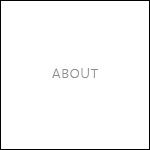Since I was a young girl, it has been a practice of mine, wherever I go, to observe and to examine in details the flora and fauna around me. Curios to know more and to unravel the secrets of nature, I choose to study Biology.
During all these years of research for my academic degrees, I continued practicing art in different frameworks. Only later in life did I make a decision to study art more formally at a local art-school.
I was soon drawn to photography as my language. I was not interested in documenting landscapes or human portraits, but rather in collecting objects of interest from different sources and creating an archive of specimens that could be used for creating imaginary scenes in the studio.
That is, in a way, a practice parallel to what a scientist does - collecting specimens from different sources and examining them in the lab. My own "lab" is a small room in the basement of my home that is used both for taking pictures, using black and white negative film, and printing the image by gelatin silver print on fiber-based printing paper.
My objects of interest have changed little over time – these are objects of memory, objects from nature and glass dishes from the lab where I work at the School of Medicine in Tel Aviv University. The logic that stands behind these preferences became clear to me in retrospect. Growing up in a home in which we were immersed in Holocaust memories; we learnt to skimp and save. We never threw anything away. Any broken or torn item was kept, to be made use of.
Those damaged objects, my home referents, were carefully collected. Among them were a rusted metal funnel, old white napkins, damaged enamel plates, a dressmaking pattern stuck behind a shelf for years, eaten up by insects, an old aluminum shaving bowl and brush, and other imperfect bowls that were used daily. In the process of documenting them as secular relics, I find an unexpected consolation. I remember the story about how my parents met for the first time in Poland after the war, trying to sell all kinds of merchandise they found in empty houses of Germans who used to live in Poland and fled back to Germany. Are the small white napkins, carrying different name initials, part of that merchandise?
The objects I gather from nature are used for staging an imaginary environment a fictional space in the studio. There are exceptions where I am interested in photographing the object where I found it. I keep the collection in open boxes and on plates in the studio, for months and years. The natural material is transformed over the years by tiny insects. All these minute or significant changes in shape and color, marks of time passing by, become part of my palate of greys that I use in order to draw the delicate cyclicality of assembly and disintegration, birth and death in nature.
|


